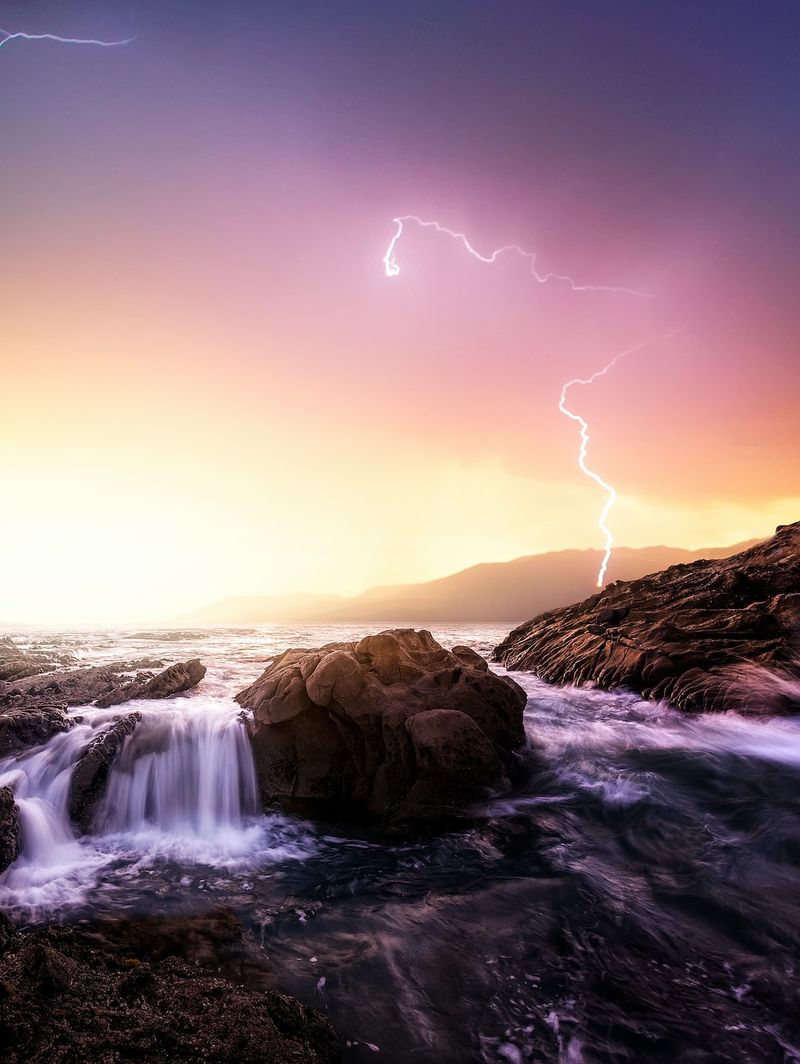Science Saturn‘s mega-storms challenge planetary formation models
Background
Background
Saturn, the second-largest planet in our solar system, has long fascinated scientists with its mesmerizing rings and turbulent weather patterns. Recent observations have cast doubt on existing theories about the formation of gas giants like Saturn, as scientists have discovered that the fallout from Saturn‘s cyclical mega storms can last for centuries. These storms have been observed since 1876, and while their visible impacts eventually fade away, the storms continue to affect Saturn‘s inner atmosphere.
Continuing Impact of Mega Storms
While the visible features of the mega storms on Saturn may fade over time, their long-lasting impact is apparent through radio emissions detected by the National Radio Astronomy Observatory’s Very Large Array in 2015. These emissions reveal disturbances in Saturn‘s atmosphere caused by the storms, leading to changes in temperature and ammonia concentration. The storms cause ammonia vapor to condense into “ammonia-rich mushballs,” which then rain down into the depths of the gas giant. However, due to the slow convection currents in Saturn‘s deeper layers, it takes years for the ammonia to be pushed back into the higher atmosphere. This phenomenon challenges previous assumptions about the dynamics of gas giants and raises questions about the energy supply that sustains these massive storms.
The Mystery of Storm Formation
Saturn‘s mega storms are distinct from hurricanes on Earth, as they form in a completely different environment. On Earth, hurricanes require a warm ocean surface to generate and maintain their energy supply. However, Saturn lacks a solid surface, so the mechanism behind the generation and maintenance of these colossal storms remains a mystery. University of Michigan professor Cheng Li, who led the international study, acknowledges this significant gap in our understanding and is actively researching this phenomenon.
Differences with Jupiter
The findings from this research also highlight the substantial differences between Saturn and Jupiter, its gas giant neighbor. While Jupiter’s atmospheric bands are predominantly caused by temperature differences, Saturn‘s bands are dominated by the giant storms that form on its surface. Furthermore, the study revealed that the concentration of ammonia in Saturn‘s atmosphere is generally lower than that of Jupiter. These differences challenge existing theories about planetary formation, as they suggest that Saturn may have less ammonia than predicted. This discrepancy raises the need to revise our current understanding of the processes involved in the formation of gas giants.
Editorial and Philosophical Discussion
Astronomy and the Quest for Knowledge
This recent study on Saturn‘s mega storms underscores the ever-evolving nature of scientific knowledge. As we continue to explore our vast universe, new discoveries challenge our existing theories and prompt us to reconsider long-held assumptions. Within the field of astronomy, where we study objects located countless light-years away, acquiring accurate data and understanding the complexities of celestial bodies is an ongoing journey of exploration and reevaluation. The discovery of long-lasting impacts caused by Saturn‘s mega storms is a testament to the resilience and inquisitiveness of the scientific community.
The Mystery of Storms on Saturn
The mystery surrounding the formation and sustenance of Saturn‘s mega storms offers fertile ground for philosophical contemplation. These colossal storms, spanning hundreds of years, defy our current understanding of storm dynamics and energy sources. The absence of a warm surface beneath Saturn‘s storms challenges the conventional wisdom gleaned from Earth’s hurricanes. These enigmatic storms serve as a reminder of the vastness and complexity of the cosmos, and they humble us as we confront the limits of our knowledge.
Revising Planetary Formation Models
The divergence between Saturn and Jupiter in terms of atmospheric dynamics and ammonia concentration serves as a call to action for scientists to revise their theories of planetary formation. The variations between these two gas giants, once thought to be similar, have prompted scientists to reconsider the factors that contribute to the formation and evolution of such celestial bodies. By scrutinizing the existing models and incorporating new data, scientists can refine their understanding of the processes that shape our cosmos.
Advice for Future Research
Conduct Further Experiments and Observations
To deepen our understanding of Saturn‘s mega storms and their long-lasting impacts, further experiments and observations are necessary. Synthetic models, combined with extensive data analysis from space probes and ground-based telescopes, can provide valuable insights into the dynamics and energy sources behind these storms. Additionally, targeted observations of Saturn‘s atmosphere using emerging technologies, such as the James Webb Space Telescope, can provide researchers with unprecedented details and enhance our knowledge of gas giants.
Collaboration and Comparative Studies
Collaborative efforts among international research institutions will be crucial in unraveling the mysteries of Saturn‘s mega storms. By comparing data from other gas giants in our solar system, such as Jupiter and Uranus, scientists can gain a broader perspective on storm formation and the unique characteristics of these celestial bodies. Comparative studies will enable scientists to identify commonalities and differences between gas giants, leading to a more comprehensive understanding of planetary formation.
In conclusion, Saturn‘s mega storms challenge prevailing theories about planetary formation and serve as enduring reminders of the complexities of the universe. The long-lasting impact of these storms prompts scientists to reevaluate their understanding of storm dynamics and energy sources. By conducting further experiments, observations, and collaborative comparative studies, researchers can refine their models of planetary formation and humanity can deepen its knowledge of the vast and awe-inspiring cosmos.

<< photo by Sean Pierce >>
The image is for illustrative purposes only and does not depict the actual situation.
You might want to read !
- “A Cosmic Connection: NASA’s Voyager 2 Reconnects with a Celestial Heartbeat”
- Catastrophic Goalkeeping Blunder Puts Matildas on Collision Course with England
- “The Lionesses Roar to Victory: England Edge out Colombia 2-1 in Thrilling Women’s World Cup Clash”
- “Last-minute Update: Everything You Need to Know Ahead of Round 24 Clash against the Raiders”
- Love Among the Stars: Zooey Deschanel and Jonathan Scott’s Journey of Romance Ends in Engagement
- Olsen Twins No More: Ashley Welcomes Her Little Aussie Mate – The Newest Addition to the Olsen Family!
- “Tevita Pangai Jr set to leave Bulldogs as Payne Haas secures record-breaking $3.6 million contract”




